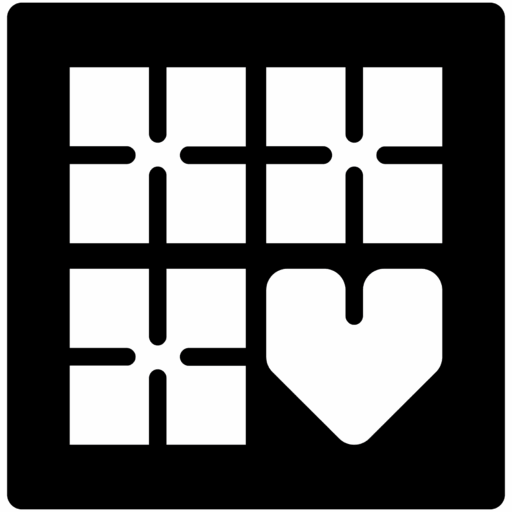Art as a Mirror of the World
Art has always been about exploration for me. It feeds the insatiable ADHD part of my brain that constantly quests for new, exciting things that make me go oooooh. I have spent my entire creative life coveting the art of others, always feeling critical of my own. Pair that with my absolute lack of ability to stick with a single medium long enough to finish things in the traditional sense—drawing, painting, crafting. I am an idea girl. I chase the thrill of the unknown and the unfamiliar, but as soon as something becomes known and familiar, the excitement fades. Unless I’m creating for a client, my work has often remained unfinished.
But now, here I am. This place I’ve landed in—this fusion of technology, art, words, and human connection—has changed everything for me. It has given me a space where all of my interests and values can coexist. It has given me a way to actually finish things, to iterate, to explore and refine in a way that keeps me engaged. And in doing so, it has helped me embrace who I am, both as a human being and as a creative being.
From Personal Expression to Public Statement
As with us all, my lived experiences have shaped the way I see the world—my own experiences with loss, with perceived injustices, with the reality of being a woman and a very young single mother trying to raise a daughter. I’ve navigated pain, fought for self-acceptance, and learned to trust my instincts when everything around me told me to doubt myself. All of that filters into my work, sometimes intentionally, sometimes without me even realizing it until the piece is finished. But when people connect with it, when they tell me it puts words to something they’ve felt but couldn’t express, I know I’m doing something that matters.
Art as a Form of Resistance
I don’t create “safe” art. My work doesn’t shy away from difficult emotions or uncomfortable truths. I embrace the surreal, the unsettling, the beautifully strange, because that’s how the world feels to me—layered, complex, and often contradictory. The art I create is a rebellion against the forces that try to dictate how we should feel, how we should look, how we should behave.
And that rebellion? It’s kindness. It’s love. It’s the refusal to conform to a world that says people should suffer quietly. It’s standing up against the idea that we should just “accept things as they are.” It’s defiance wrapped in beauty, rage wrapped in surreal softness.
I create for those who feel like they don’t belong, for those who have been told they are too much or not enough. My art is for the ones who refuse to be erased.
The Power of Symbolism
A lot of the symbolism in my work comes from instinct. Eyes, celestial elements, religious iconography, distorted figures—these things find their way into my art because they hold meaning beyond words. Eyes represent awareness, observation, and the feeling of being seen (or unseen). Religious elements speak to power, control, and the contradictions of faith. Surreal distortions mirror the way the world bends and twists under pressure.
I don’t always spell out what each piece means, because I want people to bring their own stories to it. Some will see hope. Some will see pain. Some will see themselves. That’s the beauty of it—art doesn’t just belong to the creator, it belongs to the people who experience it.
Creating Without Apology
Not everyone will like what I make. Some will feel uncomfortable. Some will try to dismiss it. Some will tell me that I should “just focus on making beautiful things”—as if beauty cannot also be fierce, as if it cannot also be a statement.
To that, I say: Good. Art is meant to make people feel something. And if it makes someone uncomfortable, that probably means it’s doing its job.
And then, of course, there’s the AI isn’t art crowd. The people who comment “pick up a pencil” or instantly dismiss my work the second they realize AI was part of the process. Some even say things like, “I loved this until I saw it was AI”—as if the entire meaning and emotional resonance of the piece were erased by that one detail. It’s absurd. It shows just how much people have hopped on a hate bandwagon without actually understanding what they’re looking at. They don’t see the hand-drawn elements, the photography, the digital painting, the meticulous refinement. They only see the letters “AI” and decide it has no value.
But that’s the thing about art: it evolves. The tools change, but the intent remains. If AI allows me to bring my ideas to life in a way that keeps me engaged, that lets me explore and refine instead of abandoning projects halfway through, then why wouldn’t I use it? The people who dismiss it outright are the ones limiting themselves. Not me.
The Power of Connection
At the end of the day, my art is about connection. It’s about making sense of a chaotic world, about reaching out through color and form and saying, “I see you. Do you see me?” It’s about breaking down the illusion that we are separate, that our struggles and joys exist in isolation.
This isn’t just about aesthetics. This is about my love of technology, my love of words, my love of people, and the very adult version of me that believes all humans are equal and deserve to live a life free from fear for who they are. I have found myself in a position to share all of that through my art, and it has been the most liberating thing I have ever done.
This is just the beginning of a series exploring the ways I use my art to process, resist, and reclaim space. Next, I’ll be diving deeper into the idea of rebellious kindness—why I believe that defiance and compassion are not opposites, but two sides of the same coin.





